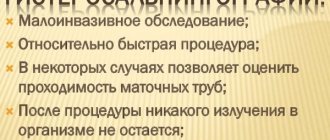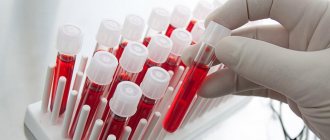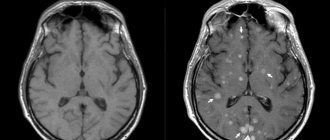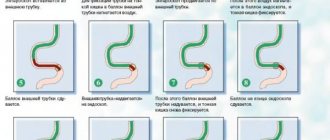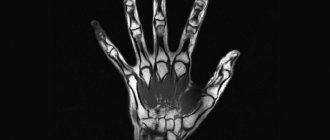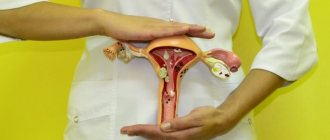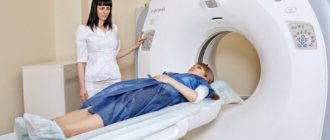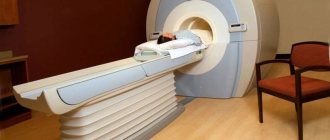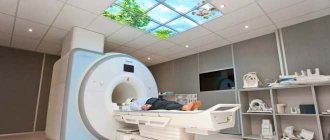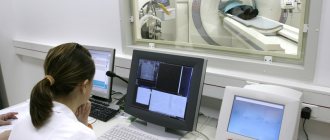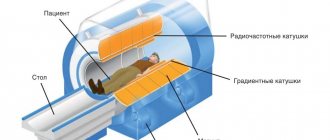Gastroscopy is one of the most informative methods for studying the condition of the gastrointestinal tract (its upper section), since this procedure allows you to visually assess the presence of damage to the gastric mucosa, the presence of polyps, erosions, ulcers, bleeding and other pathologies of the walls of the stomach and duodenum. Many patients are interested in the question of how safe this generally unpleasant procedure is, and how often gastroscopy can be done in the presence of various pathologies of the digestive tract.
The frequency of gastroscopy is determined by the attending physician.
However, this study is also prescribed for many other diseases. For example, cardiovascular: before performing a coronography, an endovascular cardiologist must ensure that there are no gastric erosions or ulcers. Otherwise, the operation will be postponed, since the patient on the eve of surgery must take strong antithrombotic drugs that thin the blood and promote bleeding.
Indications for gastroscopy
General symptoms such as nausea, diarrhea, vomiting do not always indicate the presence of diseases of the digestive tract, but if the patient complains, he will most likely be prescribed a series of tests that should confirm or refute suspicions of gastritis, duodenitis or other gastric pathologies.
Other indications for prescribing gastroscopy include the following:
- suspicion of the presence of malignant neoplasms in the stomach/esophagus;
- the need for constant monitoring of the condition of the gastric epithelium in the treatment of gastrointestinal diseases;
- symptoms of gastric bleeding;
- if a foreign object enters the stomach;
- if the patient often experiences pain in the epigastric region;
- difficulties experienced by the patient when eating;
- to clarify the diagnosis for a number of diseases not related to gastrointestinal pathologies.
FGDS should be prescribed with caution to children under six years of age, if there is a history of severe mental disorders, if the patient is diagnosed with exacerbation of chronic gastritis or gastric ulcer, or if there is a respiratory tract infection. In any case, the appointment of this procedure can occur repeatedly, and not knowing in what cases and how often gastroscopy of the stomach can be done is very worrying for many patients.
As for contraindications to the appointment of esophagogastroduodenoscopy (the official medical name for gastroscopy), there are few of them:
- some heart diseases;
- narrow compared to the standard entrance to the stomach;
- obesity 2 – 3 degrees;
- hypertension;
- kyphosis/scoliosis;
- a history of stroke/heart attack;
- congenital/acquired blood diseases.
Constant contraindications for FGDS
Absolute or permanent contraindications to FGDS are diseases and pathological conditions that are categorically incompatible with endoscopic interventions. They cannot be performed due to the high risk of complications. Doctors call such contraindications to gastroscopy:
- severe decompensated pathologies of the heart and lungs - early post-stroke or post-infarction period;
- pulmonary or heart failure in the acute or decompensated stage;
- acute hypertensive crisis and the first day after an exacerbation of an attack;
- diseases of the hematopoietic system, which are accompanied by a decrease in blood clotting.
A significant contraindication to the examination is displacement of the esophagus due to severe curvature of the spine, significant hypertrophy of the thyroid gland, as well as aortic aneurysm and mediastinal diseases. In this case, there is a high risk of injury to the esophageal tube by the gastroscope.
An absolute contraindication to gastroscopy is an attack of bronchial asthma. Under conditions of hypoxia, the patient is unable to control his behavior. In addition, the gastroscope tube makes breathing difficult even in healthy patients. If an examination is carried out in the presence of this contraindication, there is a high probability of death of the patient due to asphyxia.
Also, gastroenterologists do not recommend performing FGDS on patients in old age, when the patient has numerous changes in body functions. Most of these diseases are contraindicated and therefore require special assessment by a doctor. Even if there are indications for gastroscopy, for elderly patients the doctor selects another method: ultrasound, virtual gastroscopy, CT or MRI.
How is gastroscopy performed?
An instrument that allows you to examine the condition of the inner walls of the stomach (and, if necessary, the duodenum) is a type of endoscope. A gastroscope consists of a hollow elastic tube containing a fiber-optic cable with an optical and illuminating device at the end. Through the mouth and esophagus, the hose is inserted into the stomach cavity for a thorough examination. Through the cable, the image is transmitted to the eyepiece or monitor screen, and the doctor conducting the study has the opportunity to study the condition of the epithelium in different parts of the stomach by turning and moving the tube in the desired direction.
Is gastroscopy harmful from the point of view of the condition of the esophagus and stomach walls in contact with a solid foreign object? Before the procedure, the gastroscope is thoroughly disinfected, so the likelihood of external infection is extremely low (no more than when eating fruits, bread or vegetables). The possibility of damaging the walls of the esophagus, stomach or duodenum is also close to zero, since the device in its basic form does not have sharp protrusions.
But the procedure itself requires compliance with certain restrictions on the part of the patient. First of all, it should be done on an empty stomach: the presence of food mass makes it very difficult to examine the mucous membrane, so it is very important not to eat 10 - 12 hours before gastroscopy. Approximately 100–120 minutes before the procedure, you should drink about 200 grams of liquid (weak tea or boiled water), which will clear the stomach walls of food debris and mucus. It is highly recommended to refrain from smoking the day before, as this provokes the secretion of gastric juice.
Immediately before insertion of the probe, the pharynx and upper part of the esophagus are anesthetized with a spray, and excessive anxiety is relieved with a subcutaneous injection of a mild sedative - the patient’s calm during the manipulation is very important, since fear can lead to involuntary sudden movements, which will make it difficult to examine the walls of the stomach.
Important: the shelf life of gastroscopy before surgery is one month, after which you will have to do a second examination (in a month, significant changes can occur in the stomach cavity, which can affect the result of the operation or be a direct contraindication to its implementation).
The gastroscopy itself is carried out in the following sequence:
- the patient undresses to the waist; if he has glasses or removable dentures that do not adhere well, they must also be removed;
- manipulation is carried out only in a lying position with a straight back, usually on the right side;
- a special mouthpiece is inserted into the mouth, which must be held firmly in order to prevent reflexive clenching of the teeth;
- after instructions to take a few sips and completely relax the larynx, the endoscope is inserted and lowered until it reaches the entrance to the stomach (the most unpleasant moment is the transition from the oral cavity to the esophagus, during which a natural urge to vomit occurs);
- then the doctor begins to turn the gastroscope, which allows you to examine the condition of the gastric cavities from all sides (the viewing angle of the device, as a rule, does not exceed 150 degrees).
Colds and more
05/31/2019 admin Comments No comments
Endoscopic examination of the gastrointestinal tract is widely used in clinical practice to identify diseases of the esophagus, stomach and duodenum. FGS (fibrogastroscopy) is carried out using a special endoscope - a flexible probe that allows the doctor to visually assess the condition of the mucous membrane of the above organs. This study can be carried out in the morning on an empty stomach, or in the afternoon. However, the patient must follow the rules for preparing for the examination. Preparation for gastroscopy of the stomach in the afternoon includes both general recommendations and actions aimed at cleansing the upper parts of the digestive system from food masses.
The patient undergoes fibrogastroscopy
Duration of the procedure
When performing a gastroscopy for diagnostic purposes, an experienced doctor only needs 12 to 15 minutes to examine the entire inner surface of the stomach, however, in some cases, a biopsy (taking a sample of epithelial tissue for laboratory testing) or other therapeutic manipulations (for example, administering medications) may be necessary. Such a comprehensive study can last up to 25–40 minutes.
For some time after the manipulation, the patient should be in a supine position; eating during gastroscopy without a biopsy is allowed after 60 minutes. If the procedure was carried out with a biopsy taken, the first meal of non-hot food is allowed after 180 - 240 minutes. If the procedure is performed on a child under 6 years of age or a patient with a history of mental disorders, gastroscopy can be performed under general anesthesia.
Decoding the results
The uninitiated will probably not be able to interpret the resulting images, since the resulting picture will more likely resemble some kind of fantastic landscape. But an experienced doctor is able to make an accurate diagnosis, guided by the method of comparison with mucous membranes without pathologies.
It looks like this:
- the color of the mucous membrane ranges from red to pale pink;
- even with an empty stomach, there is always a little mucus on the surface of the walls;
- the front wall looks smooth and shiny, and the back wall is covered with folds.
With gastritis, ulcers, and stomach cancer, deviations from the norm appear that neither x-rays nor ultrasound can detect. But gastroscopy will definitely reveal them: with gastritis, the disease will be indicated by an increased amount of mucus, swelling and redness of the epithelium, and local minor hemorrhages are possible. With an ulcer, the surface of the walls is covered with red spots, the edges of which have a whitish coating, indicating the presence of pus. With stomach cancer, the back wall of the stomach becomes smooth, and the color of the mucous membrane changes to light gray.
How often can a gastroscopy be done?
In life, there are often situations when we do not attach importance to certain symptoms that indicate the presence of pathology, and when a diagnosis is made, we begin to intensively look for ways to get rid of it, undergoing consultations and examinations with different specialists. In the case of gastritis, no doctor will undertake treatment without receiving accurate information about the condition of the mucous membrane. And there are often cases when, after undergoing a gastroscopy, a new specialist may refer the patient for a re-examination to make sure that no significant changes have occurred over time. Therefore, many patients are interested in how long it will take to repeat gastroscopy.
In principle, in the absence of contraindications, the number of such manipulations is not limited, but in practice they try not to prescribe a test more than once a month - this is the shelf life of the results of the previous study. In the chronic course of the disease, in order to prevent complications (peptic ulcer, oncology), this study is prescribed 2–3 times a year. In the process of treating gastritis, if the actual effect of drug therapy does not coincide with the expected one, gastroscopy can be performed more often.
Temporary contraindications
Relative or temporary contraindications to FGDS are conditions that can be eliminated over a certain period, or require the use of special measures during the procedure. If certain rules are violated, they can cause complications during and after the examination. In some cases, such contraindications make examination of the digestive system by the endoscopic method physically impossible.
The doctor may postpone or cancel a planned gastroscopy due to the following contraindications:
- for acute inflammatory and infectious diseases of the ENT organs - for pharyngitis, bronchitis, tracheitis and sore throat;
- during exacerbation of grade 3 hypertension, when the increase in blood pressure is not critical;
- with purulent processes of ENT organs and other systems - with sinusitis, sinusitis, lymphadenitis in the face, lower jaw and neck, subclavian region;
- with exacerbation of mental and neurological diseases, which are accompanied by loss of control over behavior;
- with partial obstruction of the airways due to tracheobronchial dyskinesia (TBD).
Contraindications also apply to situations against the background of severe immunodeficiency and systemic infections in patients with HIV. The patient’s already weakened body will not be able to recover normally after endoscopic intervention.
All of the listed contraindications for FGDS require preliminary therapy. The doctor writes a referral to specialists or prescribes treatment himself. Gastroscopy is postponed until the patient is expected to recover.
Note! FGDS is not contraindicated for anemia, since it can be a consequence of stomach diseases. Nevertheless, gastroenterologists advise undergoing a preliminary course of treatment with iron supplements.
At a temperature
Even a slight increase in temperature is considered a relative contraindication to EGD of the stomach, since this symptom indicates inflammation or infection. However, the doctor may decide to perform gastroscopy at a temperature, assessing the general condition of the patient and weighing all the risks. Thus, contraindications to gastroscopy in the form of general malaise and elevated body temperature can be ignored if there are indications for urgent FGDS. At the same time, fever due to a sore throat will be a reason to postpone the examination.
For cough and runny nose
Colds can occur suddenly, including on the day on which gastroscopy is scheduled. It is not advisable to perform an FGDS if you have a cold, since in most cases it carries a risk of spreading the infection. In each situation, the question of whether it is possible to do FGDS if you have a sore throat is considered individually:
- emergency or urgent examination for a cold is indicated in any case, especially if there is a threat to the patient’s life;
- planned gastroscopy for cough and runny nose is carried out if the symptoms are not of infectious origin and do not interfere with diagnosis (for example, if they are of allergic origin);
- planned and emergency gastroscopy is contraindicated if the cough is accompanied by attacks of asphyxia (suffocation), and there is a lot of exudate in the respiratory tract.
